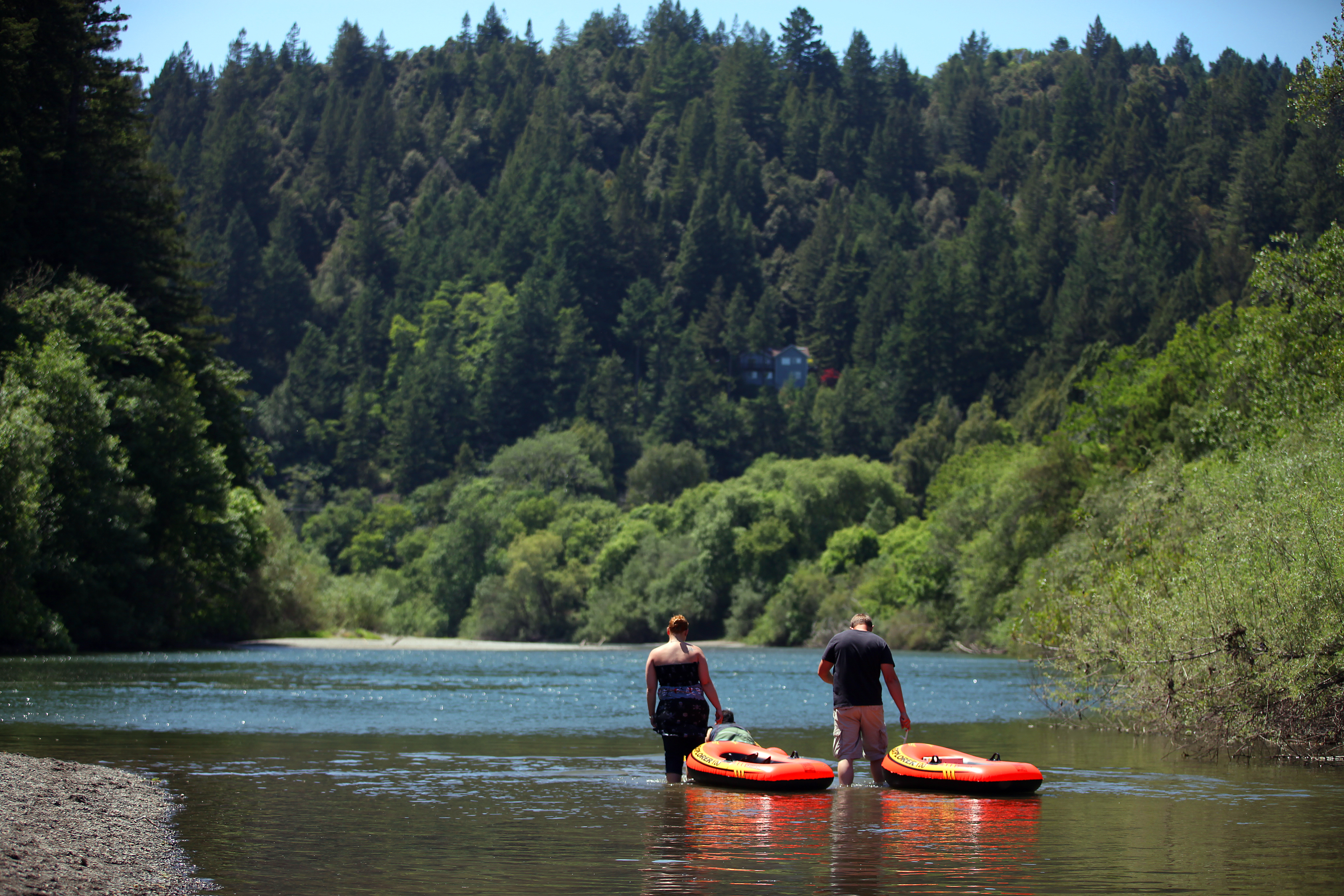When Russia owned part of America

Mikhail Malakhov has been to the North Pole 31 times, he says, following in the footsteps of generations of Russian explorers.
He even did a trip on skis.
So his latest adventure is a cinch. For nearly a month, Malakhov has been kayaking upriver with the salmon and hiking through mountainous bear country in the summer cool of southwest Alaska.
[An expedition by a celebrated Russian polar explorer traces old trade routes in Alaska]
A hundred and 50 years after Russia sold Alaska to the United States, Malakhov and a small team are retracing routes blazed by earlier Russian explorers in the 1800s. His aim, aside from thrills, is to draw attention to Russia’s deep history in North America — just as dark suspicions spread about Russia’s influence in U.S. politics.
“It’s an easily forgotten part of history,” said Tim Kelly, who is a keeper of the Russian legacy down in California.
But plenty of traces remain on the West Coast. A former Russian settlement called Fort Ross is just 90 miles north of San Francisco, and Kelly leads the group preserving it. He grew up near the fort — along the Russian River — and lives in Sebastopol, California — not to be confused with Sevastopol, Crimea.
The story of Russian America begins in 1741, when a Danish navigator working for the Russian Empire sighted the Alaskan coastline. He was Vitus Bering, honored in the naming of the Bering Strait.
Tiny permanent settlements sprouted across Alaska in the 1780s. Explorers claimed immense territory for Catherine the Great by burying metal plaques, reminiscent of Soviet pennants later left on the moon. Russian-Orthodox missionaries fanned out into the wilderness in an effort to convert the native population. The domain called Russian America took shape.
Czarist colonization was driven by the fur trade. A sea-otter pelt, known as “soft gold,” could earn a Russian sailor the equivalent of two years’ salary. Seal penises were also in high demand, as aphrodisiacs for the Chinese market.
The broader goal in the “Wild East” was a vast imperial sweep.
Conquest could be brutal. The Russians took slaves and destroyed villages, and much of the original population died of diseases introduced by the invaders.
Around 1800, Russian America consolidated under a trading company, and spilled beyond Alaska, down the Pacific Coast. A Russian expedition arrived in Spanish-controlled San Francisco in 1806, seeking provisions for malnourished outposts up north.
“They sailed in past the Spanish guns at the mouth of the bay and dropped anchor,” Kelly said. It was a bold move, because Spain refused to trade with other powers.
The chief of the Russian mission, a quixotic, easily sea-sickened adventurer named Nikolai Rezanov, charmed the Spanish. Before long, he was engaged to the Spanish governor’s teenage daughter. But he died before they were married.
“There’s a fun sort of alternate reality of America, if the Russian presence had been strengthened,” Kelly said.
By the 1810s, the Russians had Fort Ross in California, with farms, windmills and cannons, as well as bases in Hawaii. Czar Alexander I even briefly claimed much of the Pacific Northwest. But the Russian sphere of influence was tenuous: hundreds of thousands of square miles held by only 1,000 or so scattered colonists.
In 1841, the Russians sold Fort Ross to John Sutter — a Swiss settler who famously owned another piece of property where gold would soon be discovered, setting off the Californian gold rush. The sale remains controversial. A Russian politician claimed in 2014 that Sutter never actually paid up, and that Russia should reclaim Fort Ross — as a missile base.
Within a decade, California had become a state. Russian America receded back to Alaska in the face of the expanding United States. Sea otters, which had teemed in the hundreds of thousands, were nearly extinct from over-hunting, Kelly said. Fur profits dwindled.
But in 1865, construction began on one of that era’s most ambitious industrial projects: the Russian-American Telegraph, which Western Union planned to string from San Francisco, under the Bering Strait, to Moscow.
The Russians had backed the Union in the Civil War — in which the final shot, incidentally, was fired by a Confederate warship across the bow of a Union whaler near the Aleutian Islands — and the telegraph could have deepened the alliance. But the line was soon abandoned, when an undersea cable was laid across the Atlantic. Workers in Russian America were so far from civilization that news of their redundancy took almost a year to reach them.
In 1867, the United States bought Alaska wholesale, writing a check to Russia for $7.2 million, or more than $100 million today. Some Americans denounced the purchase as a useless extravagance — “Russia has sold us a sucked orange!” cried The New York World — and one lone scholar still argues that it has been a money-loser.
Alaska became the 49th state in 1959. But Russian America enjoys an afterlife: in the Russian dialect spoken in the village of Ninilchik; in place names and natives’ surnames; in the thousands of Russian-Orthodox native adherents in Alaska and their onion-domed churches; in an old wooden redoubt that Malakhov, who is Russian, is visiting on his trek.
A few expansionist-minded Russians still harbor seller’s remorse. But Malakhov, who set off from Dillingham, Alaska, last month and returns from the wilderness this week, believes that politics is secondary to “people-to-people contacts,” and that a friendlier future can be reached by a detour through the distant past.
“Russia and America have a very good shared history,” he said. “They should support each other.”